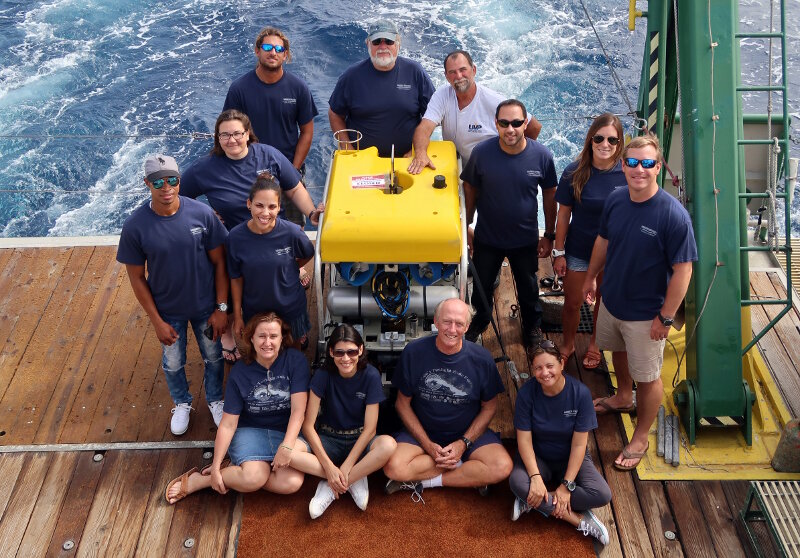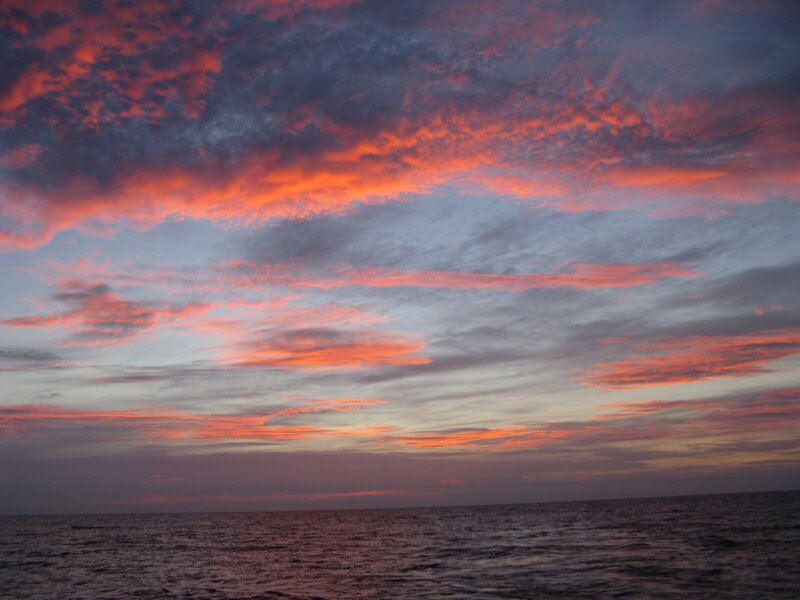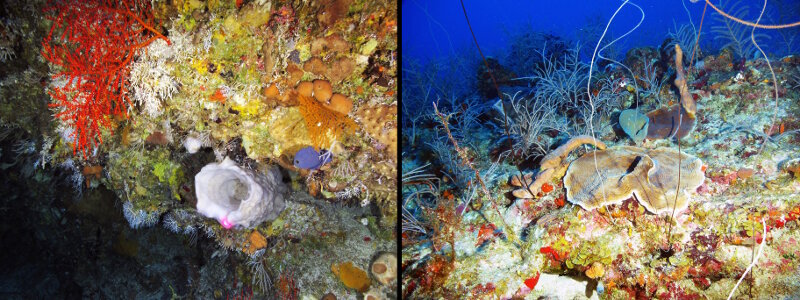
By M. Dennis Hanisak, Ph.D., Research Professor - Harbor Branch Oceanographic Institute at Florida Atlantic University
June 13, 2017

Group photo of Leg 2 scientic party. Image courtesy of Cuba’s Twilight Zone Reefs and Their Regional Connectivity. Download larger version (jpg, 1.4 MB).
Our circumnavigation of Cuba to explore its mesophotic reefs is now complete! We ended Leg 2 of our Cuba’s Twilight Zone Reefs Expedition right where we started, in Havana.

Sunrise, as we arrive off of Havana on the last day of the expedition. Image courtesy of Cuba’s Twilight Zone Reefs and Their Regional Connectivity. Download larger version (jpg, 1.6 MB).
Over the last month, we traveled 2,729 kilometers (1,475 nautical miles) in Cuban waters on the University of Miami’s Research Vessel Walton Smith. Our primary research tool in our explorations of Cuba’s mesophotic reef was the University of North Carolina Wilmington’s Mohawk Remotely Operated Vehicle (ROV), making 43 dives, with almost 100 hours of bottom time and taking nearly 20,000 underwater images.
We have explored underwater areas of Cuba that have never been scientifically studied before, finding new species and extending what is known about many others. We have, to our amazement, found excellent reefs around the whole island.
On Sunday, our last hours on the ship were spent hectically securing our collection data and specimens that will be studied by our team. Before most of the scientific party disembarked, we convened one last meeting in the lab of our ship. Some of the Leg 1 scientists returned to the ship, along with a number of key leaders of the Cuban agencies that had done so much to make our expedition possible. Chief Scientist John Reed gave a quick overview of the cruise. Several presentations followed from each of the five disciplines: Juliett González Méndez (corals), Linnet Busutil (sponges), Alain García (fish), Patricia González Sanchez (algae), and Daniel Estrada (oceanography). Plans for future meetings, scientific meetings, and publications were discussed.

Cuba’s mesophotic reefs support an incredible diversity of beautiful organisms. Image courtesy of Cuba’s Twilight Zone Reefs and Their Regional Connectivity. Download larger version (jpg, 2.8 MB).
For those of us who sailed the Walton Smith back to its home port in Miami, we had a bit of a bumpy ride, with 6-foot seas. It was a good time to reflect on the expedition.
We came not knowing what we would find at most of the sites we explored. We now believe that we have seen what may be the most extensive, healthiest mesophotic reef habitat in the Caribbean, surrounding the entire island of Cuba. The magnitude of what we have accomplished was recognized by all of us as we concluded our summaries. Carlos Diaz (Director of the National Center of Protected Areas) perhaps put our expedition in context the best, when he said that it was the most important scientific expedition in Cuban waters since 1970.
This is our last mission log for the Cuba’s Twilight Zone Reefs Expedition. At the end of the month, Chief Scientist John Reed will post a cruise report summarizing more of the cruise statistics and accomplishments.